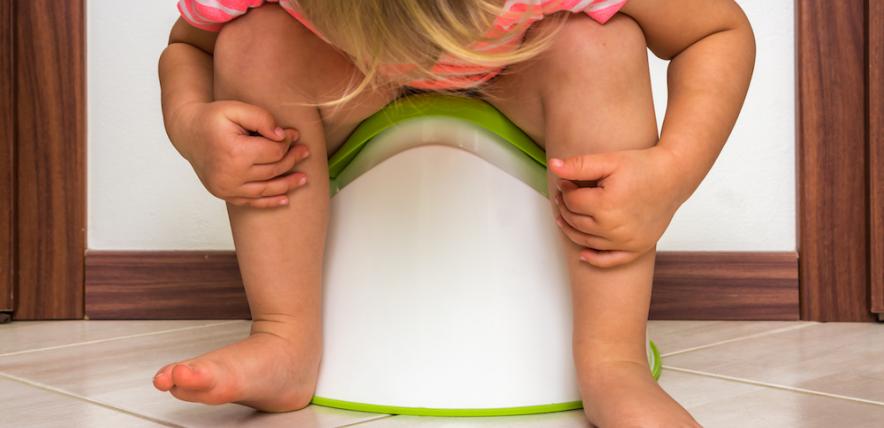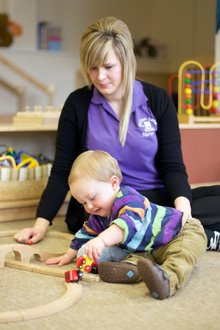Constipation is common in early childhood, causing discomfort and distress for toddlers and their families. Here the Infant and Toddler Forum outlines the signs and symptoms and some simple measures you can put in place to remedy this.
What is constipation?
Constipation is a collection of symptoms and signs rather than a disease. It may be defined as: ‘abnormally delayed or infrequent passage of dry, hardened faeces, often accompanied by straining and/or pain”.
However, the stools may not always be hard, particularly when associated with soiling.
Constipation can show itself in different ways.
The toddler may:
- have no bowel movements for three or more days
- pass lots of small, hard stools
- hold on to stool, with symptoms including:
- Appearing to be pushing, with signs such as his or her face becoming red
- Using avoidance techniques, such as dancing about or hiding
- Soiling: loose stools that leak around the hard stool and into pants, pyjamas and bedclothes.
What causes constipation in toddlers?
The causes of most constipation are unknown and will resolve by around five years old if well treated. If not treated, then a behavioural problem may develop: toddlers can begin to withhold their stools in fear of the pain of passing it and this makes the condition worse.
Without treatment, it may become chronic and could affect the rest of the child’s life.
How to treat constipation
1. Use mild laxatives as directed by GP
Toddlers with a sore stomach from constipation will not eat or drink well, so the first step is to encourage parents to see their GP, who can prescribe a mild laxative. Parents may be reluctant to use these, but mild laxatives do not act on the bowel wall – they simply add more fibre to the stool, increasing the amount of water in the stool and make it softer, and pain-free to pass.
2. Change the diet
- Once mild laxatives have been used, the toddler’s diet can be changed to include more water and fibre. Encourage your toddler to drink enough fluid – six to eight drinks a day. Always give a drink with each meal and at least one in between meals with a snack. Toddlers may need more fluid in hot weather and when he or she has been taking a laxative.
- Water is the best drink. Avoid all sweet drinks, including fruit juices. Limit any milk drinks to three small drinks per day, or around 120ml.
- Try to eat together as a family. Give toddlers small, regular meals and snacks and serve a variety of foods and concentrate on quality rather than quantity. Persevere with fibre-containing foods such as cereals, fruits, vegetables, pulses and nuts. Encourage toddlers to be physically active for at least three hours each day. This includes indoor and outdoor play, walking, scooting and activities such as swimming.
- A consistent routine will help toddlers develop regular toilet habits. For example, sitting on the potty or toilet for a few minutes after meals. Hand washing afterwards can be fun!
- Listen and watch for signs that toddlers are ready to begin potty/toilet training. Take your time; don’t rush it. Give praise and encouragement and make sure that toddlers can sit on the toilet. Use a child seat or footstool so that he or she feels safe.
This article was first published in Under 5 magazine — the membership magazine of the Early Years Alliance.
Where next?
Will these recipes get your child to love lentils?
How much daily exercise does my child need?
Fussy eaters: how to handle meal times







